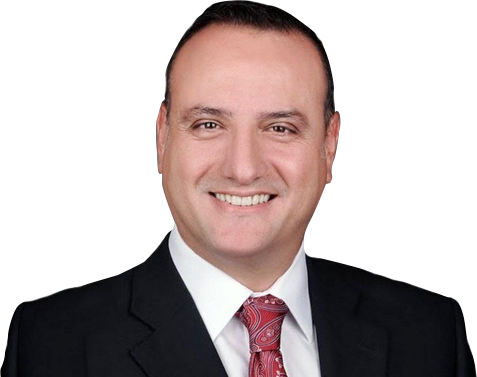Type 2 Diabetes is a condition which appears because of impairment on blood glucose cpntrol and progresses with high blood glucose (hyperglycemia) constantly. Cause for high blood glucose in Type 1 Diabetes is lack of insulin or insulin deficiency congenitally whereas the actual cause in Type 2 Diabetes is desensitization against insulin. Beta cells secreting insulin of patients with Type 2 Diabetes get tired in time and a process towards insulin deficiency and absence by progress of Type 2 Diabetes starts.
We all know that first step treatment of Type 2 Diabetes is correct nutrition and an active life. These precautions provide some control for the patients at beginner stages. However, insulin resistance exceeds these precautions in time and oral antidiabetic drugs (OADs) that will support insulin are added into the treatment. These drugs increase insulin secretion and prevent glucose (simple sugar) absorption from intestines.
Unfortunately, these treatments fall short even though they are used as single treatment or in combination. Insulin treatments are started at this case.
Insulin and Type 2 diabetes Treatment
Patients with Type 2 Diabetes do not experience problem in terms of insulin production initially. Moreover, insulin quantity increases during first stages. When muscle cells start to present resistance against insulin, beta cells in the pancreas increase insulin production and hyperinsulinism (elevation of insulin) is observed. Beta cells get tired and their counts decrease in time. Insulin production reduces. For the patients at this stage, insulin is added into treatment of Type 2 Diabetes.
Insulin facilitates blood glucose control especially which elevates earlier after the meal. Different insulin types with long or short acting insulin correct both earlier fullness and late fullness blood glucose levels. Fasting blood glucose may be controlled.
Insulin treatment may be changed easily and frequently according to the needs of a diabetic patient during all periods of life. Many patients may change their treatment according to their daily activities. They may decrease the dose if they will exercise that day or they may increase the dose if they will have a meal rich in carbohydrate.
When Should Insulin Treatment Start?
|
|
When Should Insulin Treatment Start? |
|
|
|
|
|
|
|
|
|
Your physician should reply this question and this should not be postponed because you afraid from insulin injection. Time and form of insulin treatment completely depends on personal characteristics.
As a main principle, we, those dealing with metabolic surgery believe that insulin treatment should start as early as possible. You know why? Because;
- Insulin treatment is the most adjustable treatment form according to persona needs among current drug therapies.
- Insulin treatment is the most physiological treatment.
- Insulin treatment is a treatment form which bases on replacement of deficient.
- Insulin treatment is a drug therapy form which decreases long term complications most.
- The most important; insulin treatment started earlier provides preservation of current insulin reserve.
Protective effect of insulin treatment started earlier for diabetic complications as well as protective effect on insulin production capacity of your body are greatly important. Preservation of your own insulin reserves (endogenous insulin reserves) is important to remove Type 2 Diabetes findings completely by metabolic surgical methods. In other words, if your pancreas may produce insulin actively, your Type 2 Diabetes may be removed completely by metabolic surgery.
Do all risks remove with insulin treatment?
Although insulin treatment starts with low doses and infrequently, insulin need gradually increases further. Appearance of diabetes dependent life threatening problems is not related with insulin dose. Even though your insulin doses are lower or higher, if your blood glucose levels are low and close to normal levels, these life threatening problems and diseases appear lately.
However, insulin treatment does not prevent these complications completely. Type 2 Diabetes is an absolute progressive disease and life style change and late and mild appearance of these complications are tried to be provided.
How is insulin dose adjusted?
|
|
How is insulin dose adjusted? |
|
|
|
|
|
|
|
|
|
Insulin doses are adjusted individually for each patient by considering physical nature of the patient, accompanying diseases to Type 2 Diabetes and similar conditions. Although these general insulin treatment principles are preserved generally, changes may be applied according to requirements of daily life. Briefly, general frame is:
- Your body weight is important in terms of insulin dose.
- Ratio and distribution of fat and muscle mass on your body
- Your activities during your daily life
- Your daily meal consumption
- Drugs used for other diseases which accompany to Type 2 Diabetes
- Your health status
- Your emotional status and stresses in your life
- Status of your accompanying diseases
Doses are changed frequently by your physician when insulin treatment starts first. During this period, you may be asked to follow your blood sugar (plasma glucose) more frequently and carefully. Both fasting blood glucose and postprandial blood glucose are important. Your physician will create a protocol according to your needs with these follow-ups.
The most important factor for insulin treatment is your compliance. New insulin forms are produced with small and thin needles for easy application. Dose adjustments has become more simple and painless applications are provided. You may ask all questions about these applications to your physician and diabetes nurse.
Insulin Types
How do we differ insulin forms? We may group insulin in different forms;
1. According to action time
Short acting insulin preparations: (insulin applied on mealtime)
Lispro and Aspartate are artificial insulin forms.
- Lispro: Humolog
- Aspart: Novorapid
- Glulisine: ApidraSolostar
Regular insulin is a natural insulin originated from human.
- Regular: Actrapid, Humulin-R
- Basal Insulin
- Medium acting insulin:
- Human originated natural insulin
- NPH (Humulin-N, Insulatard)
Long acting insulin:
- Insulin like artificial insulin forms
|
|
Insulin Pens |
|
|
|
|
|
|
|
|
|
- Glargine (LantusSolostar)
- Detemir (Levemir)
2. According to natural structure
- Human originated Insulin
- Artificial or Synthetic Insulin Forms
3. According to purity degree
- All insulin forms used today are pure.
4. According to their densities
- Crystallized: Short acting
- Buffered: NPH
- Ready to use Mixture: 30/70
Principles of Insulin Treatment
|
|
Insulin and increatin preparations in pen form |
|
|
|
|
|
|
|
|
|
Targets of Insulin Treatment
- To remove hyperglycemia findings (to lower blood glucose)
- To prevent diabetic ketoacidosis
- To stop breaking down process due to high blood glucose and to establish normal body balance
- To protect normal body weight
- To decrease infection frequency
- To reduce death risk of mother and baby during pregnancy
- To decrease small vascular damage and large vascular damage caused by diabetes
Insulin Treatment Forms
Insulin is generally added into the treatment for patients whose blood glucose can not be controlled sufficiently. Insulin may be applied solely as well as preferred in addition to oral anti-diabetic drugs. Insulin combined with metformine is most preferred combination. Insulin use with metformine is more effective in blood sugar control than dose increase of insulin used solely. Metformine + Insulin combination is also effective on lowering lipid levels.
1. Combined Protocols
Metformin+NPH Insulin:
- Insulin is applied as NPH insulin most frequently in patient who takes metformin (glucophage) in the morning and at night.
- This combined use facilitates control of blood glucose. Hypoglycemia risk is low.
- Weight gain is less.
Metformin+Insulin Glargine:
- Nocturnal Hypoglycemia (severe reduction in blood glucose at night) is less.
- It is more effective than NPH Insulin in blood glucose control after dinner.
2. Insulin Use Solely
- Insulin use solely is valid for Type 2 Diabetes like patients with Type 1 Diabetes.
- The important issue in Type 2 Diabetes is need of insulin dose increase in time. Because the most important characteristics of Type 2 Diabetes is continuing with progressive insulin deficiency.
- Most frequently, it is applied twice a day.
- 30/70 Mixed Insulin is the most preferred form this treatment.
- It is applied before breakfast and dinner.
- Although there is a risk of night hypoglycemia, it is easy for elder patients who have difficulty to prepare the mixture by their own.
- 2/3 of the total dose is applied in the morning and remaining 1/3 is applied before dinner.
|
|
Insulin Pens |
|
|
|
|
|
|
|
|
|
Insulin Treatment Methods
1. Single dose insulin per day: It is applied for elder, disabled patients and persons with social problems who will have difficulty to adjust insulin dose. It is started as support into OAD treatment.
2. Double dose insulin per day: It is a second stage treatment where single dose is not sufficient.
3. 3 to 5 doses insulin per day: It is a treatment form where short and long acting insulin forms are used individually with varying frequencies. This insulin treatment form mimics normal insulin secretion best. It is the best treatment which provides blood glucose control during the day.
4. Continuous Insulin Secretion (Insulin Pump): It is frequently used for patients with Type 1 Diabetes in particular. It is also used for patients with Type 2 Diabetes who have difficulty on blood glucose control. It monitors blood glucose with frequent intervals by a needle fixed under the skin and adjusts itself short acting insulin dose required.
THINGS THAT SHOULD BE KEPT IN MIND FOR INSULIN USE
Preserving Insulin
- Insulin may be kept in room temperature for 30 days
- Effects of insulin formulations used over 30 days may be less.
- If your blood glucose does not reduce although you inject same dose of insulin, destroy your insulin vial and start to use a new vial.
- Keep insulin vials that you do not use in the refrigerator.
- Examine the insulin in the vial before each use. Destroy the vial in case of any abnormality:
- Flocculation
- Icy appearance
- Precipitation formation
- Clearness and color change
Preparation of Mixed Insulin
- There are many different treatments where short acting and long acting insulin preparations are used together.
- Both insulin types may be injected individually or they may be injected in the same injector.
- If pen insulin will be used, two different pens and two different injection site are obligatory.
- This requirement may be met with many ready mixed insulin preparations in the market.
- Glargine insulin is not used in any mixture. It creates precipitation when mixed.
Technique for Insulin Injection
- Insulin preparations which are vial only are used for injection.
- Stopper of insulin vials which are not used for the first time should be wiped with alcohol before use.
- If insulin is in mixture, it should be shaken gently between two hands before each use.
- Before drawing insulin into the injector, the air as much as the volume to be taken should be given into the vial. So, vacuum effect is prevented.
- If short and mid-term insulin preparations will be drawn into the same injector from two different vials, air as much as the insulin volume should be given into both vials. In this case, short term insulin should be drawn into the injector first.
- Insulin is administrated subcutaneously. The skin is elevated slightly between two fingers and the needle is placed. The skin is released first after the procedure. Then, the needle is drawn back.
For a painless applications:
- Insulin should be in room temperature.
- No air bubble should be left in the injector.
- Muscles in the application area should be loosened.
- Injection should be gently and rapid.
- Both insulin administrations should be done with a sterile and disposable injector. The needle tip or injector should never be used for second time.
|
|
Insulin Injection Sites |
|
|
|
|
|
|
|
|
|
(The illustration was taken from patient training brochure called Insulin preparations and Insulin Administration technique prepared by Diabetes Mellitus Study and Training group of Turkish Endocrinology and Metabolism Association)
- Insulin injection sites should be changed for each application
- Insulin injections are applied onto body sites where subcutaneous fat tissue is much.
- Insulin injected into the abdomen is absorbed faster from arms and legs.
- Insulin injected into the sites where subcutaneous fat tissue is thin and poor may pass into the muscle. Absorption is very fast in this case.
- Insulin injected into limbs (arms or legs) after exercise is absorbed faster. This fast absorption is probably result of increased blood circulation on the skin due to the exercise.
- Massage onto the injection area or increase on skin temperature increase insulin absorption.
- Insulin injection sites should be changed at certain intervals. Continuous performing these change is called rotation. If rotation is not performed with regular intervals, over hardening and enlargement (lipohypertrophy) or shrinkage (lipoatrophy) on the fat tissue appears.
Side Effects of Insulin Treatment
Hypoglycemia
Hypoglycemia mean over decrease of blood glucose. Hypoglycemia is the most common and frightening side effect during insulin treatment. Incorrect organization of the meal time and over exercise are important for appearance of hypoglycemia. Previous hypoglycemia attack or lack of knowledge on hypoglycemia are important cases increasing hypoglycemia risk.
Studies conducted on patients with Type 1 Diabetes (DCCT) has shown that risk of hypoglycemia decreases when HbA1c level decreases. Adversely, decrease on HbA1c level and increase of hypoglycemia frequency and dominancy is a known case. Same findings were obtained for studies performed for Type 2 Diabetes as well. HbA1c shows general control for last 2 to 3 months. If the patient has high HbA1C level, blood glucose is generally high. Hypoglycemia appears rare in this case. On the other hand, patients with good blood glucose control may easily decrease below desired levels with a little more insulin. The level where hypoglycemia findings appear is 60 mg/dl (3.3 mmol/L) and below of blood sugar (plasma glucose) for most people.
|
|
Exhausted and sweating man because of hypoglycemia |
|
|
|
|
|
|
|
|
|
Symptoms for Hypoglycemia
- Shaking and sweating
- Fear and excitement
- Irritability and aggressiveness
- Nausea
- Palpitation and sense of heat
- Dizziness and confusion
- Tiredness, exhaustion
- Concentration disorder and difficulty to speak
- Hunger sense
- Blurry vision, double vision
Weight Gain and Obesity
Weight gain with insulin treatment is very common. Different mechanisms to explain this case were revealed:
- Normalization of blood glucose provided with insulin (normoglycemia) reduces glucose (simple sugar) amount excreted by the urine. In this case, the energy source excreted from the body is left in the body. It is deposited after conversion into fat.
- Insulin increases fat depositing in the fat tissue directly.
- Increase of insulin doses for treatment of high blood glucose causes hypoglycemia because of excessive insulin relatively. This mild hypoglycemia appears as sense of hunger. The patient gets hungry more and has to increase meal portions.
- Patients who gain weight with insulin treatment causes stronger insulin resistance. This increases insulin requirement and patients continue to gain more weight.
- Obesity means a fatness condition which needs treatment. Obesity is a condition that especially muscle, liver and fat tissue do not respond to insulin. Permanent treatment of obesity provides more efficient control than all current treatments.
- The most efficient and permanent treatment of obesity is possible with obesity and metabolic surgery.
|
|
Lipoatrophy |
|
|
|
|
|
|
|
|
|
- Metabolic surgery completely eliminates all findings of Type 2 Diabetes which is due to obesity or progresses with obesity and recovers Type 2 Diabetes clinically.
- IDF (International Diabetes federation) suggests that metabolic surgery methods should be considered if diabetes of the patients with Type 2 Diabetes and BMI> 30 kg/m2 can not be controlled with drugs and insulin. (International Diabetes Federation Notification: Bariatric Surgical and Procedural Interventions
in the Treatment of Obese Patients with Type 2 Diabetes. A position statement from the International Diabetes Federation Taskforce on Epidemiology and Prevention-2011)
Lipoatrophy / Lipohyperatrophy
In the past, there was an abnormal loss on the fat tissue on injection site after injection of non-pure insulin onto the fat tissue. This condition is called Lipoatrophy. Lipoatrophy is very rare with pure insulin preparations used today. If no injection is applied onto the lipoatrophic site, the fat tissue on that site may be renewed within months- years.
Lipohypertrophy is opposite of lipoatrophy. An excessive enlargement may occur on the fat tissue of the insulin injection site. Pain tolerance of this site decreases and a hard mass appears after repetitive injections. We call this fibrosis. Insulin absorption may be irregular and unequal from these sites. When injection is suspended onto these areas, massive formation regresses.
|
|
Residues Accumulated on Arterial Wall |
|
|
|
|
|
|
|
|
|
Atherosclerosis is plaque formation which narrows the wall due to residues accumulated on your arterial wall. These plaques narrows the arterial wall like inside part of old calcified water pipes.
It is problematic whether insulin treatment causes atherosclerosis. Although there are articles reporting that insulin directly causes atherosclerosis, some articles report that insulin treatment may cause vascular damage with disorders due to diabetes.
In multi-centered studies, it was reported that insulin preparations injected do not create any risk for atherosclerosis. Risk of atherosclerosis caused by insulin treatment is so minimum when compared with positive results. Regular exercise has a significant protective effect solely for atherosclerosis.
Do not set the exercise and insulin programs back and do not disrupt your life order.
 English
English Turkish
Turkish

